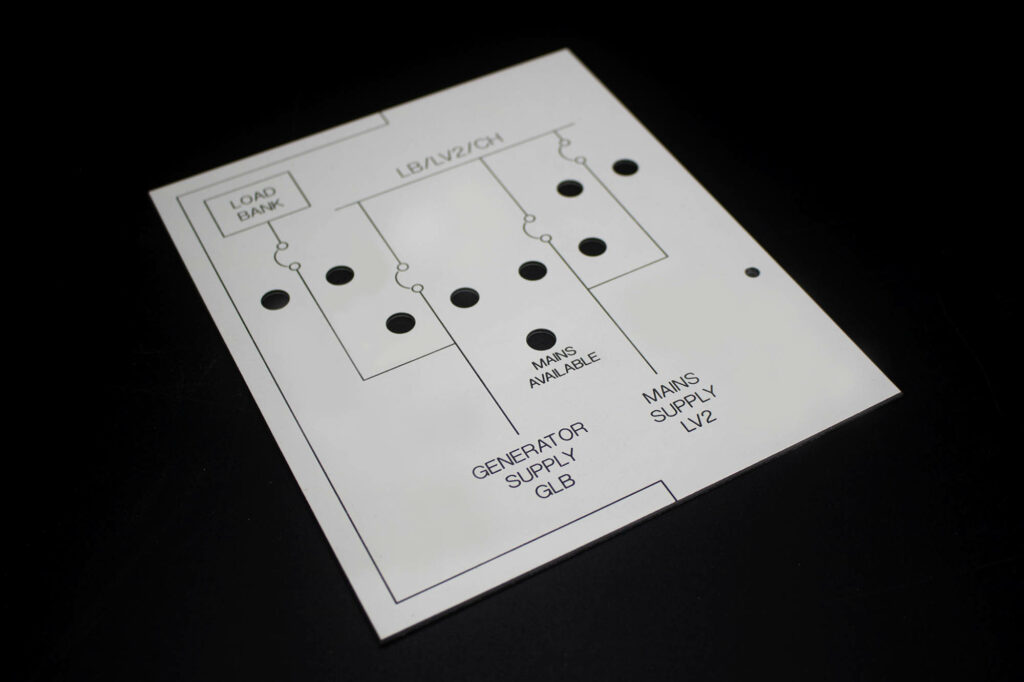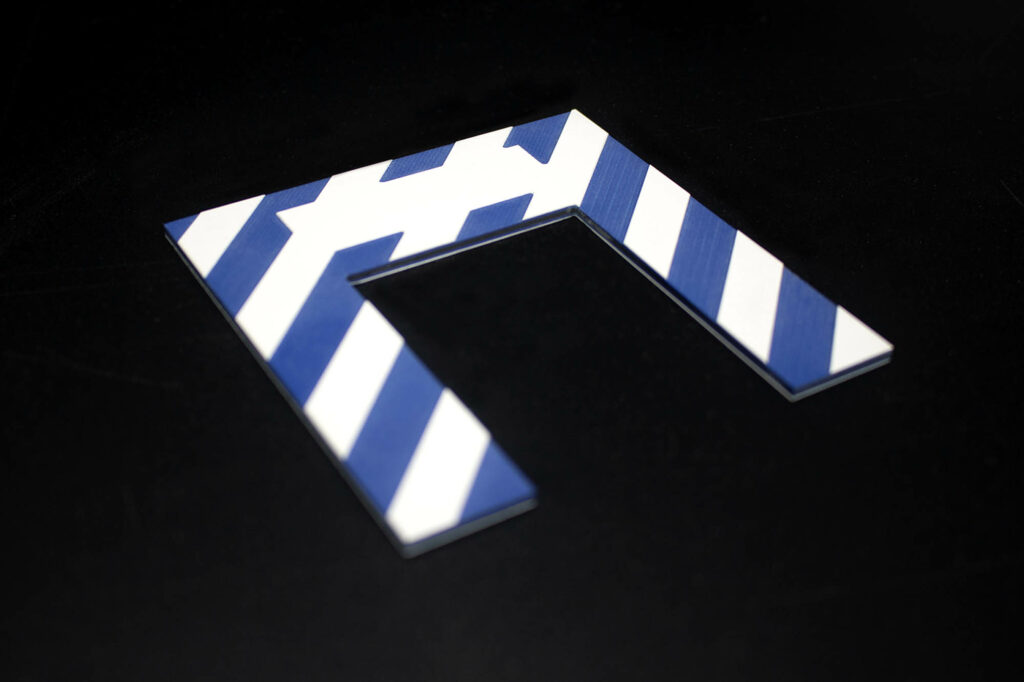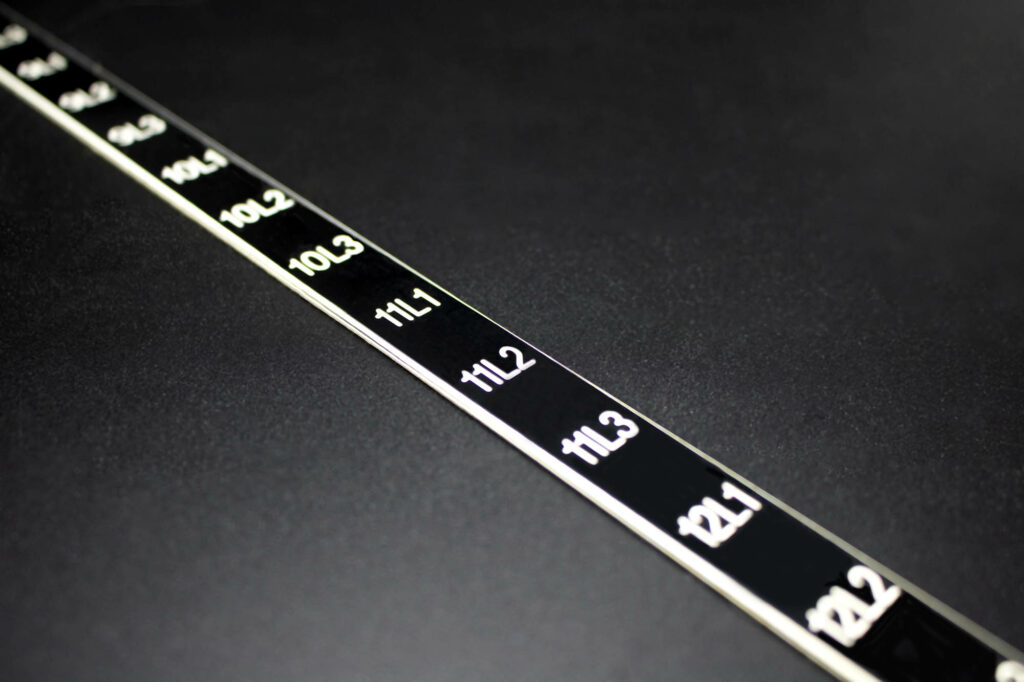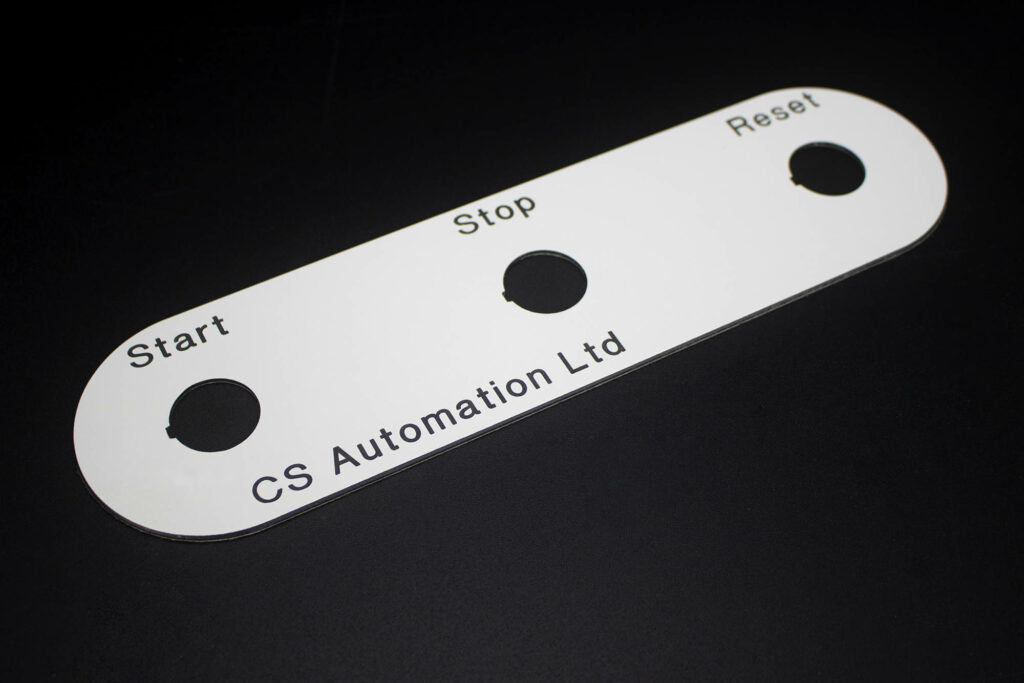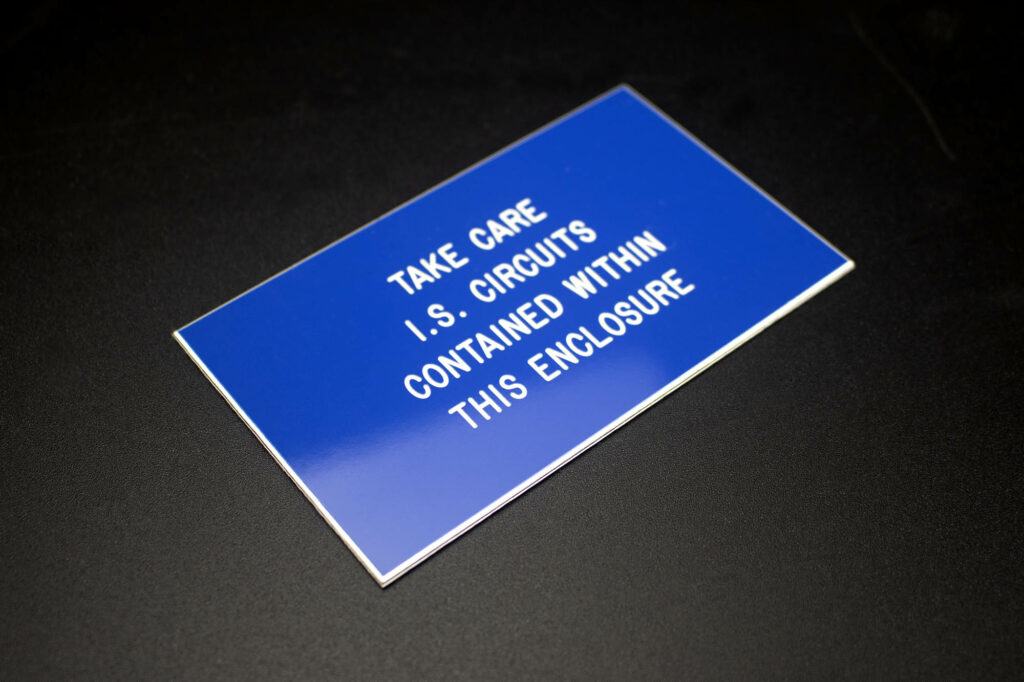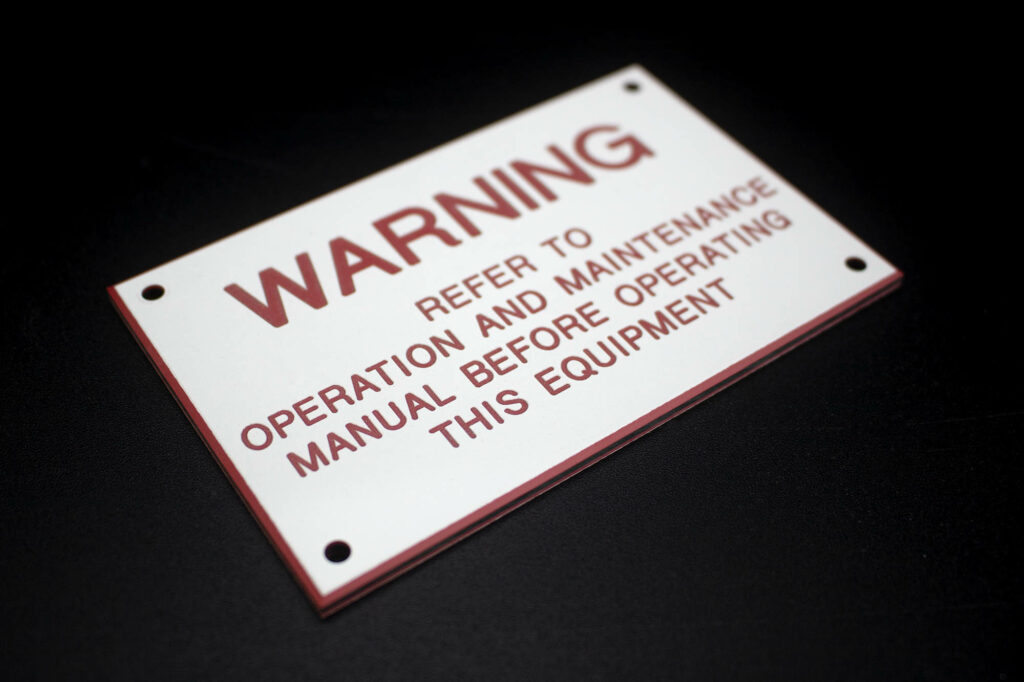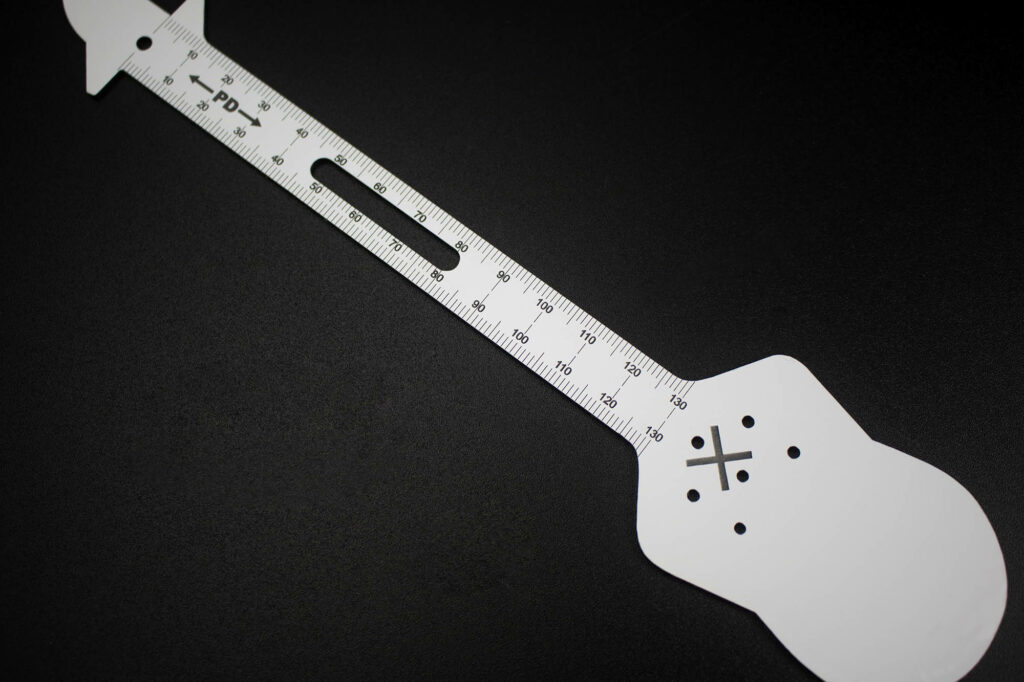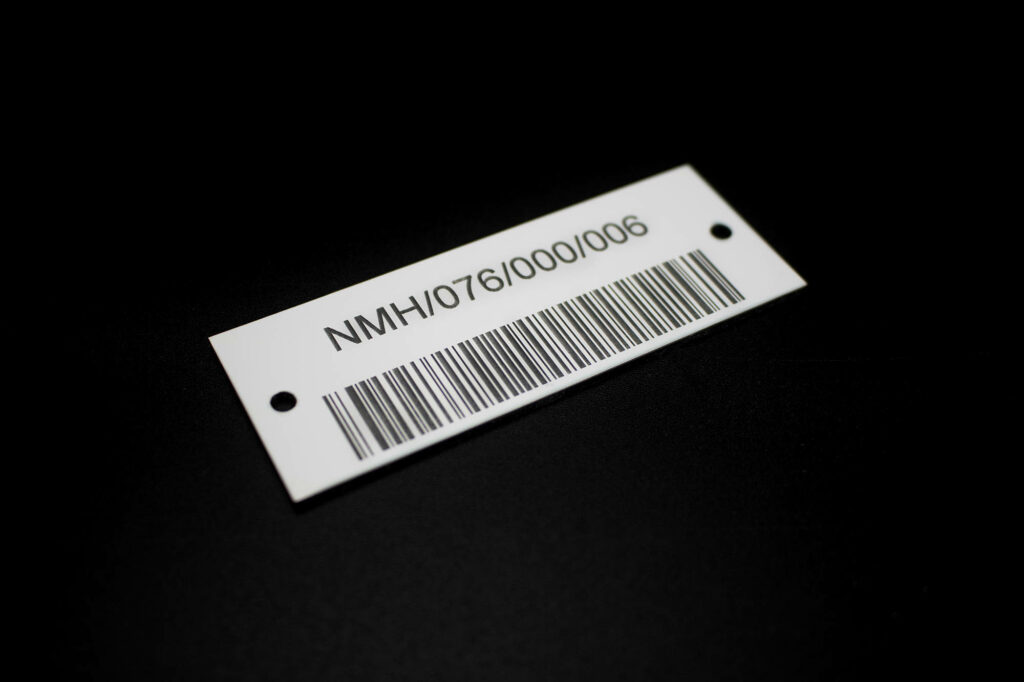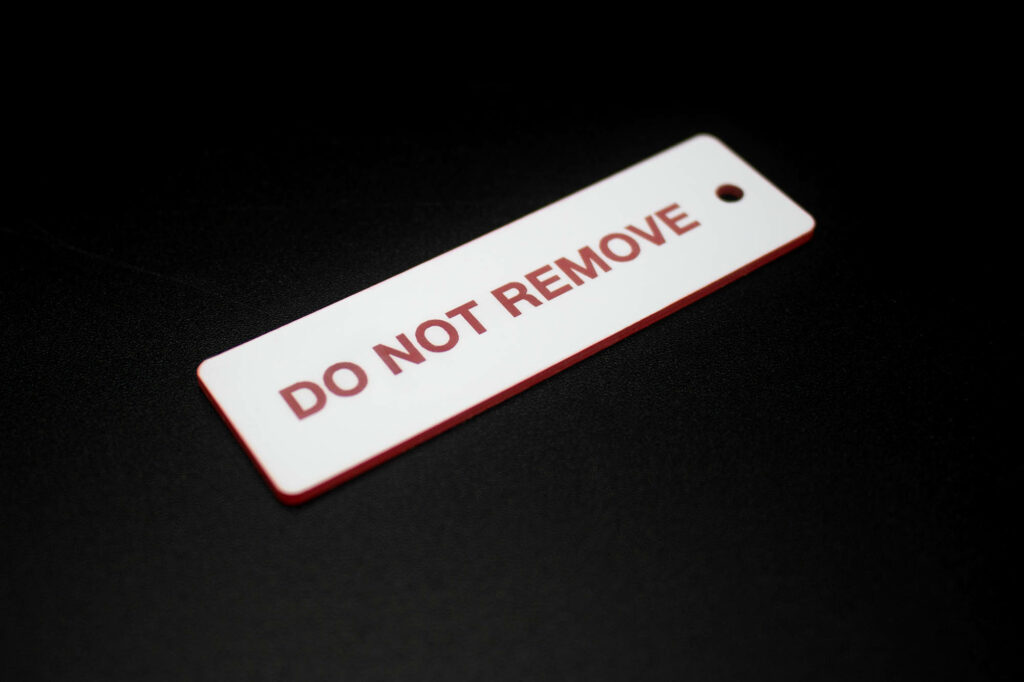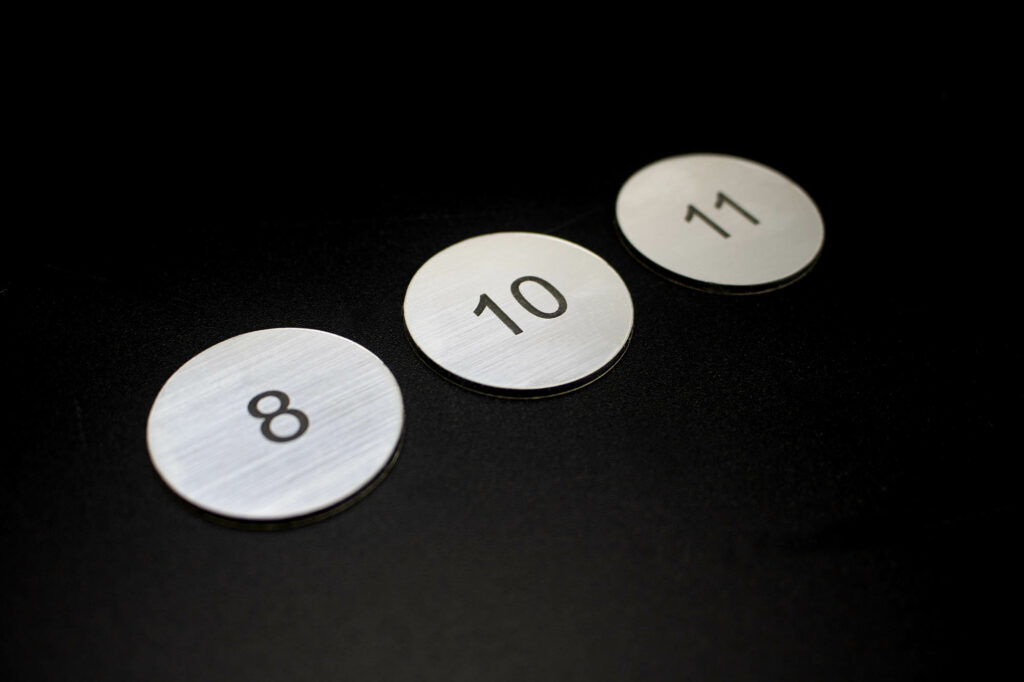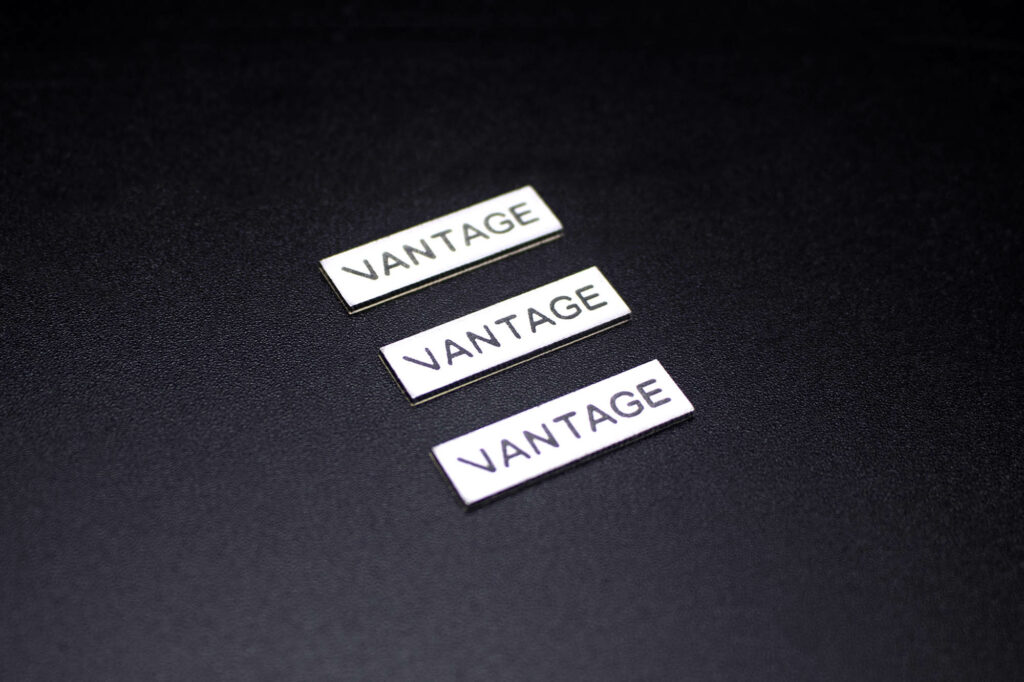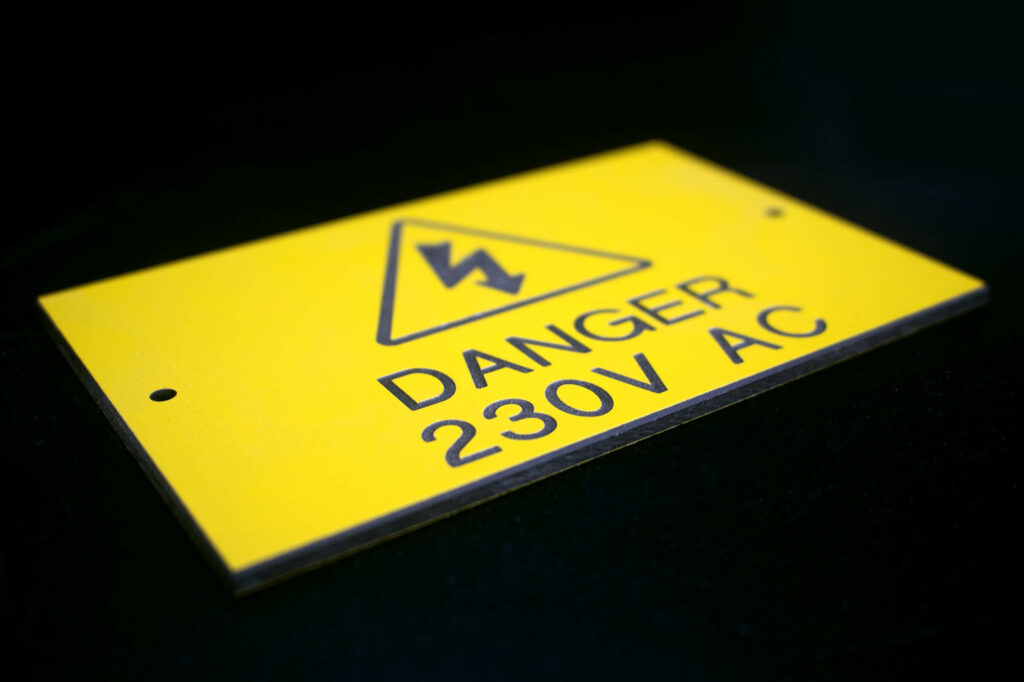
A History of Traffolyte
Articles
Traffolyte or Traffolite, originated as a brand name for multi-layered phenolic plastic sheets. The name comes from the location of the original manufacturers Metropolitan-Vickers Electrical Ltd, when it was first produced in 1927 at their Trafford Park factory in Manchester for transformer labels.
The names presence in the market for so long has undoubtedly made it stick. The term Traffolyte now more broadly relates to the material for engraved plastic signs and is the simple technique of sticking together two differing coloured layers of thin plastic. Almost any product consisting of 2 or more multi-coloured engraving plastics is now considered a ‘Traffolyte’ – even though this was the original brand name and there are now many other alternatives.
Traffolyte can also be known as Rigid Laminate, Phenolic Laminate and most commonly ABET Rigid Engraving or Hard Laminate – made from phenolic plastic sheets that are sandwiched together consisting of layers of Kraft paper impregnated with phenolic resins and outer layers on both sides. Contrasting colours are sandwiched together so that when one layer is engraved away it reveals the other contrasting colour.
Traditionally Engraved Examples
Traffolyte’s popularity stems from its very hard wearing rigidity and longevity – in comparison to a printed label, you may never need to replace a Traffolyte label, therefore they can often be a much more cost effective option. Its resistance to solvents and chemicals allows it to be cleaned without risk of damaging or removing the detail, as well as having a general ability to withstand harsh industrial environments. Traoffolyte labels also don’t conduct electricity, so are perfect for electrical contractors and companies that can’t have signage or labels which could conduct electricity in their application such as aluminium or stainless steel.
Years of use and research show that the phenolic plastic used in Traffolyte actually creates a toxic dust during production and so precautions must be taken during production – machine engraving is the only method recommended to engrave the laminate and a guillotine or saw method to cut to shape. We continue to use Traffolyte type products which are machine engraved but due to the continual expansion in to laser marking and cutting, we use a safer alternative to Traffolyte when combining with laser – UV stable and recommended for both interior and exterior use, this flexible 2 ply laminate has all the great qualities of the much loved Traffolyte and is available is a huge range of colour combinations.
Laser Marked Laser Laminate Examples
Typical Applications for Traffolyte Labels include:
- Electrical Labels
- Asset Labels
- Valve Tags
- Locker discs
- Warning signs and labels
- Mandatory signage
- Prohibition Signage
- Instructional Signs
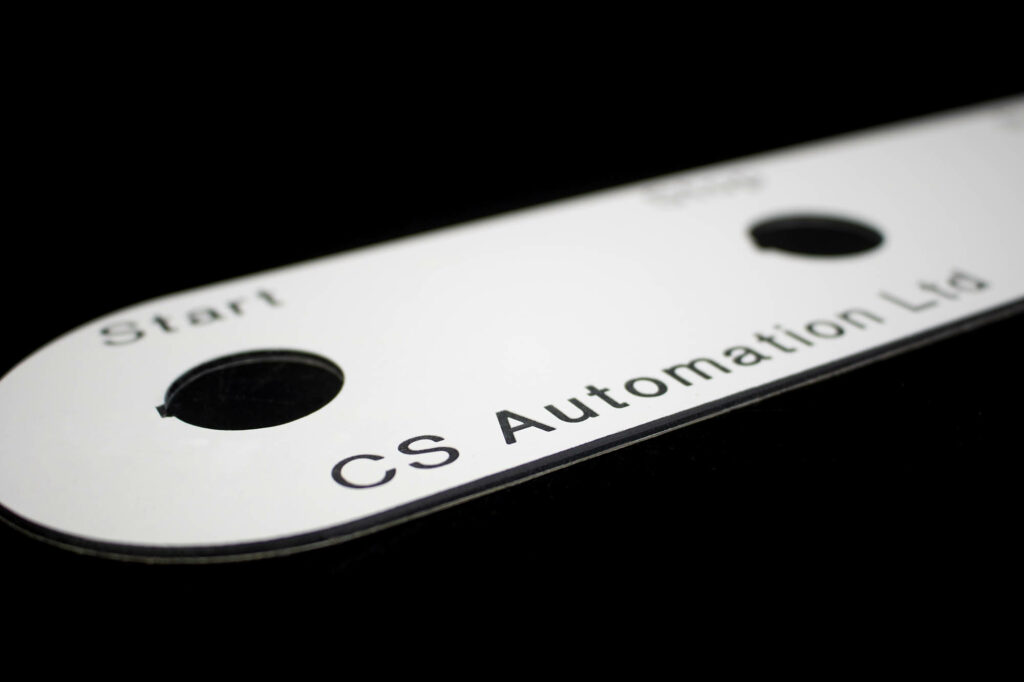
Let's discuss your project.
Whether you have a full brief or just an idea, we'd love to share our expertise with you.
Contact us“You guys smashed it! Thanks!”
“Just to confirm today we received the labels. Thank you for the superb service.”
“Thanks for the work. It’s absolutely gorgeous. And you can quote me on that! I am seriously impressed. Such tight tolerances that I’ve had to hammer the...”
“They look the business. Thanks!”

